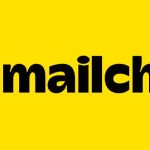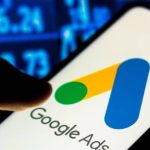So, you launched your first Facebook ad campaign, but your cost per result is sky-high. It’s not exactly the outcome you were hoping for. Now you’re wondering – how long does it take for Facebook ads to optimize? The short answer is: it depends. In this guide, we’ll walk through the factors that impact how quickly your Facebook ads can optimize, like your budget allocation and targeting. We’ll also give you a realistic timeline so you know what to expect. Spoiler: don’t give up too soon. It takes some time for the Facebook ad algorithm to collect data and optimize your ads for the best results. Stick with us as we map out the optimization journey so you can level up your Facebook ad results and achieve your business goals.
What Does Ad Optimization Mean on Facebook?
Optimizing your Facebook ads is all about getting the most bang for your buck. It means making tweaks and adjustments to ensure your ads are shown to the right audience at the optimal time. This helps stretch your ad budget further and improves overall performance.
The Optimization Process
Facebook has a powerful ad delivery system that uses machine learning to optimize your ads automatically. It analyzes tons of data points like user demographics, interests, behaviors, and past ad performance.
Based on this data, the system determines:
- Who to show your ads to (audience targeting)
- When to display the ads (ad scheduling)
- How much to bid for each impression (bid strategy)
The goal is to get your ads in front of people most likely to take a specific action, like making a purchase or signing up. As your ads run and collect more data, the system gets smarter about optimizing delivery.
Why It Matters
Ad optimization is crucial because it directly impacts key metrics like:
- Cost per result (e.g., cost per purchase, sign-up, etc.)
- Click-through rate (CTR)
- Conversion rate
- Return on ad spend (ROAS)
The better optimized your campaigns, the more efficient your ad spend becomes. You get more bang for your buck by reaching higher-intent audiences.
Optimize or Be Left Behind
In this age of AI and big data, outdated “set it and forget it” strategies simply won’t cut it. If you’re not letting Facebook dynamically optimize your campaigns, you’re leaving money on the table.
Optimization helps you stay agile and data-driven. It ensures your ads adapt to changing user behavior and platform updates. Don’t get left behind – let the machines do the heavy lifting to maximize ROI.
Why Optimizing Your Facebook Ads Matters
It Improves Your Return on Investment
When you optimize your Facebook ads, you’re essentially fine-tuning them to perform better. This means your ads reach more of your target audience, generate better engagement, and ultimately drive more conversions or sales. By continuously testing and tweaking your ads, you get more bang for your Facebook advertising buck. A well-optimized campaign can significantly boost your return on ad spend (ROAS).
It Helps You Outsmart the Competition
Facebook’s ad platform is incredibly competitive, with businesses of all sizes vying for users’ attention. If you aren’t optimizing your ads, you’re likely losing ground to savvier competitors who are. Optimizing gives you an edge – your ads will be more relevant, eye-catching, and persuasive than ones that are just set and forgotten.
It Provides Valuable User Insights
The optimization process involves closely analyzing performance data about who is (and isn’t) responding to your ads. These insights are pure marketing gold. They allow you to refine your targeting, messaging, creative elements, and more to resonate better with your audience. The more you optimize, the more you’ll learn about your customers.
It Ensures Your Ads Stay Fresh
User behavior, trends, and Facebook’s algorithms are constantly shifting. An ad that crushed it six months ago may now be stale or underperforming. Optimization is all about keeping your ads current and capitalizing on new opportunities as they emerge. It prevents your Facebook Ads Campaigns from going stale.
It Aligns With Facebook’s Priorities
At the end of the day, Facebook wants businesses to create ads that provide an excellent user experience. Optimized ads with strong relevance scores tend to get prioritized placement and lower costs. If you make the effort to optimize, Facebook will reward you with more efficient ad delivery.
How Facebook’s Algorithm Learns and Optimizes
The Delivery System
Facebook’s ad delivery system is essentially a massive auction. Every time someone opens their app or loads a page, an auction takes place to determine which ads get shown. This auction factors in your targeting, budget allocation, and bid strategy amongst other things.
However, it also analyzes mountains of data on how people engage with ads. This “learning phase” helps Facebook optimize who sees your ads for maximum impact.
Crunching the Numbers
During this learning period, Facebook is ingesting data on ad performance across a variety of factors. Things like:
- Audience demographics
- Placement performance
- Time of day impacts
- Creative elements that perform best
It takes time to gather enough data for the system to start optimizing effectively. The more your ad runs, the smarter it gets at putting your budget towards the best opportunities.
Finding the Sweet Spot
How long this takes can vary quite a bit. Facebook recommends giving it about 4-5 days per ad set to exit the learning phase. But many experts advise being patient for 7-10 days or longer.
The more narrow your targeting, the longer it may take to accrue enough data. While that can be frustrating, don’t jump the gun – let the Facebook algorithm do its thing. Once it finds the sweet spot, your results will improve dramatically.
Patience is Key
So, while those first few days can feel like a slog, try to be patient. Keep a close eye on cost-per-result, but resist the urge to tinker too much. Making constant changes just resets the clock on optimization.
Give Facebook’s powerful AI some time to learn what works. When it does, you’ll see your ads start firing on all cylinders. Just hang tight and let the algorithm work its magic.
Major Factors That Impact Ad Optimization Time
Ad Audience Targeting
One key factor that impacts how quickly your Facebook ads optimize is your audience targeting. The more specific and niche your targeting is, the longer it may take for the ad delivery system to fully optimize. Why? Because there is a smaller pool of people who match that laser-focused criteria.
On the flip side, if your targeting is too broad, you may see faster “optimization,” but that just means the system is casting a wider net – not necessarily finding your ideal customers. The sweet spot is targeting that’s relevant but not too restrictive.
Ad Creative Quality
The quality of your ad creative (images, videos, copy) plays a huge role in optimization time as well. Highly engaging, thumb-stopping creative will resonate quickly with the right audiences and generate more data for the ad delivery system to optimize on.
Bland, generic ads tend to underperform initially until the system can better understand who they appeal to over time. Put simply – the better your creative, the faster optimization tends to happen.
Ad Budget Level
While it may seem counterintuitive, higher ad budgets can actually lead to faster optimization in many cases. This is because Facebook can spend more aggressively to gather data on what’s working before fully ramping up delivery.
Lower budgets mean a slower data accumulation process, so it takes the system longer to detect the optimal audiences and creative combinations. The best approach is often to start with higher budgets, then scale down once optimization has occurred.
Testing Approach
Finally, your overall testing strategy impacts optimization time as well. If you’re constantly making major creative, audience, or bid changes, you’re essentially restarting the learning process over and over.
While some testing is necessary, it’s wise to make controlled, incremental changes. This allows the ad delivery system to continue optimizing on an established base rather than starting from scratch.
Tips to Speed Up Your Ad Optimization
Tired of waiting for Facebook’s ad optimization to kick in? We get it – the sooner your ads are optimized, the sooner you can start raking in results. Here are some best practices to speed things up.
Target a Specific Audience
Don’t go too broad with your audience targeting. The more focused and niche your targeting, the quicker Facebook can optimize and deliver your ads to the right people. Take the time to create detailed audiences based on interests, behaviors, and demographics.
Test Different Creatives
Facebook’s algorithm rewards engaging ad creatives. Test out different images, videos, copy, and calls-to-action to see what captures attention best. The higher the engagement, the faster optimization will occur.
Leverage Automated Rules
Facebook’s automated rules allow you to automate certain optimizations based on set conditions. For example, you could set a rule to increase your budget if your cost-per-result is below a certain threshold. Letting Facebook do some of the optimizing for you can accelerate results.
Monitor the Learning Phase
When you launch a new ad set, Facebook goes through a mandatory “learning phase” where performance fluctuates as it optimizes delivery. Keep a close eye on the learning phase and be patient – it can take 4-5 days or longer depending on your budget and audience size.
Increase Your Budget
While it may seem counterintuitive, increasing your daily budget can actually speed up optimization. Facebook prioritizes ad sets with larger budgets, so a temporary spending boost could be worthwhile to exit the learning phase faster.
The key is finding that sweet spot between budget size, audience targeting, and creative testing. With some strategy and patience, you can accelerate your path to fully optimized Facebook ads.
When to Expect Your Facebook Ads to Optimize
Learning Phase
It takes time for Facebook’s ad delivery system to analyze and understand your audience, creative, and overall campaign performance. During the “learning phase” — which typically lasts around 3-5 days after launching a new ad set — your ads will be delivered somewhat randomly as Facebook gathers data.
Don’t get discouraged if performance seems lackluster at first. Be patient and give the system time to optimize delivery to your most profitable audiences.
Hitting Full Optimization
After the learning phase, your Facebook ads should start optimizing delivery based on the data gathered. But when exactly can you expect full optimization?
It depends on several factors like your budget, audience size, bid strategy, and more. Generally though, most campaigns hit full optimization within 2-4 weeks after launching. At this point, your cost-per-result will stabilize as Facebook focuses ad delivery on the top converting segments.
Monitoring and Adjusting
Once optimized, you’ll want to closely monitor performance using the Facebook Ads Manager analytics. Look for audience segments that are driving the most conversions at the lowest cost. You may need to adjust targeting, creative, budgets, or bidding periodically to maintain optimal results.
It’s also a good idea to launch new tests and ad sets frequently. Facebook’s algorithms can get stale over time, so introducing fresh ad copy and targeting keeps your campaigns optimized. Consistently seeking incremental improvements is key for long-term Facebook ads success.
Signs Your Facebook Ads Are Optimized
Cost Per Result Decreasing
One of the clearest indications that your Facebook ads are optimizing is a steady decline in your cost per result. Whether you’re paying for website clicks, lead form submissions or online purchases – a decreasing average cost is a telltale sign the ads are becoming more efficient.
As the delivery system learns which audiences respond best to your ads, it displays them more frequently to those likely to convert. This increased relevance means you pay less per desired action over time.
Frequency Levels Off
Initial Facebook ad campaigns tend to have relatively high-frequency scores. This metric measures how many times the same person sees your ad on average. While some frequency is expected to reach people multiple times, excessively high numbers diminish returns.
Once optimized, frequency levels should stabilize as the ads find their groove. You’ll avoid oversaturating the same users while still getting sufficient exposure to potential customers.
Conversions Become More Consistent
In the beginning, conversion rates from your Facebook campaigns can fluctuate dramatically from day to day. Big spikes are often followed by dead periods as the system searches for traction.
When fully optimized, however, your conversion volume should level out into a steadier stream of consistent results. You’ll still see some variance, but the peaks and valleys will smooth out into predictable performance.
Relevance Scores Hold Steady
Facebook’s relevance score evaluates how well your target audience is responding to an ad. It ranges from 1 (poor) to 10 (great) based on engagement rates and other factors.
Earning and maintaining a high relevance score of 7 or above demonstrates your ads are showing to the right people. It’s a clear indicator the delivery system has cracked the relevance code.
The surest way to know if your Facebook ads have been optimized? Your bottom line improves with a higher conversion rate at a lower overall cost per result. If you’re seeing these positive trends, your campaigns are officially in the optimization zone.
Troubleshooting Slow or Poor Ad Optimization
Ad Fatigue & Audience Saturation
Ever feel like your FB ads just aren’t hitting the mark lately? You’re not alone. Ad fatigue and audience saturation are two common culprits behind sluggish ad performance.
Ad fatigue happens when your audience has seen the same ad creative too many times. They get bored and start ignoring or outright blocking your ads. Switching up creative elements like images, videos, copy, etc., can help breathe new life into stale campaigns.
Audience saturation means you’ve maxed out the potential of your targeting parameters. If there’s no one new to show your ads to, performance will tank. Expanding your audience through broader targeting or finding new niches is key.
Optimization Windows & Budgets
Facebook’s ad delivery system is a behemoth of algorithms and machine learning. But even this AI powerhouse needs time and data to properly optimize your campaigns.
The general rule of thumb? Give Facebook around 4-5 days per ad set to gather enough impressions and conversions for its systems to really start firing on all cylinders. But remember, every ad account is different based on spend, goals, audience size, and more.
Budgets also play a big role here. If you’re running on a shoestring with tight daily budgets, Facebook may not have enough data to optimize efficiently. As a rule, you’ll want a minimum daily budget of at least $40-50 per ad set for best results.
Creative Testing & Analysis
Not seeing the ROI you want? Take a hard look at those ad creatives. Mediocre images, boring copy, and generic videos are a death sentence for Facebook ads.
Rigorous A/B testing across ad elements like headlines, descriptions, images/videos, calls-to-action and more is critical. Every audience segment responds differently, so don’t make assumptions. Let the data inform your creative direction.
And when you find a winner, don’t get complacent. Facebook’s ecosystem is ever-changing. What works today may flop tomorrow. Continuous creative refreshes, iterative testing, and granular performance analysis should be standard practice.
How Long Does It Take for Facebook Ads to Optimize: FAQs
How quickly do Facebook ads start working?
You’ll see some results almost immediately after launching your Facebook ad campaign. But it takes time for the algorithm to fully optimize and for you to get reliable metrics on performance. Most experts recommend giving it 4-5 days before making any big changes.
During this initial testing phase or as they call it “learning phase”, your ads are being served to a wide audience as Facebook gathers data on who is engaging with your content. Have patience – the more data the system has, the better it can refine and optimize delivery to your ideal audience.
What factors impact Facebook ad optimization time?
Several key things determine how quickly Facebook can optimize your ads:
- Budget size – Higher budgets mean more data for faster optimization
- Audience size – Larger audiences take longer to fully optimize
- Campaign objective – Some goals, like conversions, require more data
- Ad creative – Engaging visuals and copy helps optimize faster
So for example, a low budget campaign targeting a broad audience for brand awareness may optimize in just a couple days. However, a high-spend campaign with a tight remarketing audience pursuing purchases could take over a week.
How can I speed up Facebook ad optimization?
While you can’t fully control the pace, there are some tips to potentially accelerate ad optimization:
- Use unified campaign budgets and budget optimization
- Leverage Facebook’s recommended audience targeting options
- Run multiple ad sets with different creative for more data
- Test different versions with Campaign Budget Optimization
- Narrow audience targeting, if possible, for your goal
The key is giving Facebook’s AI as much quality data as you can from the start. That will help it quickly find your best prospective customers and show them optimized ads.
Conclusion
So, in the end, don’t expect your Facebook ads to start optimizing right away. Give them some time to gather data and find the right audience. Check back on their progress after a few days or a week, but wait at least 2 weeks before making any big changes or determining if they’re working. The optimization algorithm needs time to work its magic. With some patience, you’ll start to see your ads gain traction and your costs decrease. Just hang in there, make small tweaks






